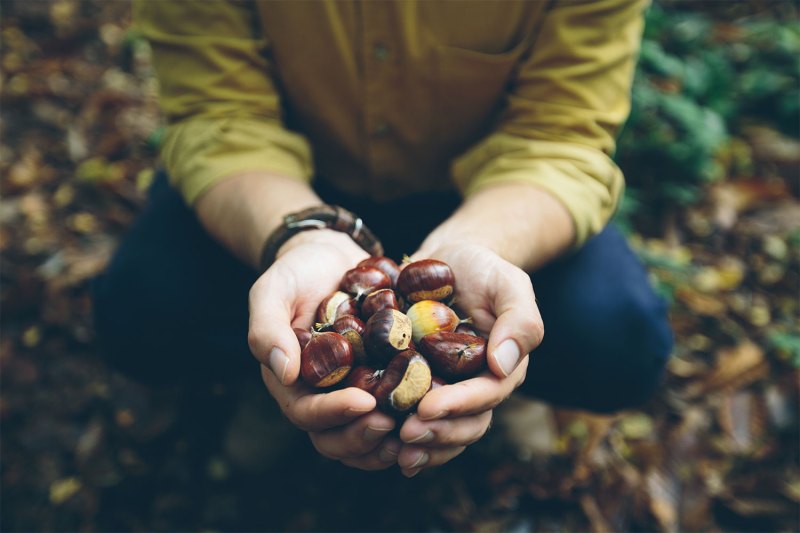 In recent years, the practice of foraging for free-growing wild foods including plants, herbs, and fruits, both out in the wilderness and even in urban environments, has become more and more popular. Just as our ancestors once did as gatherers, we continue to do so in our modern world, especially as more people realize the many benefits of foraging in this day and age: You can learn how to live off the land, become able to identify and know more about the local flora in your area, and become less reliant on supermarkets and other global food supply chains, embracing locavore eating at its finest. And even if you don’t forage at that high level, just finding fun and safe ingredients in the wild to supplement your meals allows you to interact with your environment in a whole new way, enabling you to connect with nature and adopt a healthier lifestyle.
In recent years, the practice of foraging for free-growing wild foods including plants, herbs, and fruits, both out in the wilderness and even in urban environments, has become more and more popular. Just as our ancestors once did as gatherers, we continue to do so in our modern world, especially as more people realize the many benefits of foraging in this day and age: You can learn how to live off the land, become able to identify and know more about the local flora in your area, and become less reliant on supermarkets and other global food supply chains, embracing locavore eating at its finest. And even if you don’t forage at that high level, just finding fun and safe ingredients in the wild to supplement your meals allows you to interact with your environment in a whole new way, enabling you to connect with nature and adopt a healthier lifestyle.
But for all its pleasures and benefits, being able to successfully and safely forage still takes time, practice, and first-hand knowledge and experience. The most immediate danger of foraging is finding and eating something that’s been improperly identified, risking, at best, bad side effects, and, at worst, serious injury or even death. That’s why it’s important to do some research before even starting out, and to follow some basic tenets to keep yourself and others safe and healthy.
Get some guidance
To start your foraging adventure, it’s a good idea to get some guidance and advice from the pros. Find some local field guides about the flora and other wild plants in your area that you can bring along and use to identify plants in the field. But especially when you’re starting out, it’s a good idea to learn from those with experience. Find a local forager who is willing to teach you the tools of the trade and act as a mentor; it’ll help boost your confidence in being able to identify plants and you’ll learn plenty of insider tips and tricks. You can also join a local club or foraging organization, going on group excursions to learn and forage together or take in-person classes from expert foragers.
Start with easy-to-identify plants
As a beginner, it’s best to start looking for easily recognizable types of wild foods to help you gain confidence in your abilities and get into the groove of seeing where different types of plants thrive. Looking for seasonal berries like wild blackberries or strawberries are good places to start. From there, you can branch out to more difficult plant types.
Never eat anything you’re not 100% sure about
This may be the most important rule of foraging: if you can’t say with 100% certainty that the plant you want to forage is safe to eat, don’t risk it. Nature doesn’t play by the rules of civilization: Growing out in the wild, plants aren’t guaranteed to always look as they do in the guidebook, changing with the seasons or taking on different shapes or colors because of disease, pests, or other ailments. And oftentimes, plants will have lookalikes, with the key difference being that one is poisonous while the other is perfectly safe. Misidentifying and eating poisonous plants can definitely kill you or seriously weaken you, so if you have the slightest doubt, don’t eat it. And this is another good reason to make connections with more experienced foragers and foraging groups in your area, as you will have more resources to help you identify something if you’re not 100% sure.
A good starting point is to thoroughly research and become well-acquainted with what poisonous plants grow in your area, so you can always keep an eye out for them and know them by name and sight.
Don’t over-forage
Foraging is very touch-and-go; there are no guarantees that you’ll be able to find what you’re looking for. So when you happen to find a good patch of wild herbs or plants, it can be tempting to take advantage of the bounty you’ve discovered and take it all. But that’s extremely bad foraging etiquette. Only take part of the plant, generally about a quarter of it, and do so in a sustainable way that doesn’t damage the roots or reproductive parts of the plant. That way, not only can other foragers take advantage of the find and harvest some for themselves, but most importantly, the plant will be able to continue growing and thriving. You can even return to the same spot next year and harvest the same plant. You should also only take the part of the plant you plan to use; harvesting and then discarding unwanted parts of the plants is frowned upon. To learn more about how to sustainably harvest the plant you’ve found, turn to your foraging group for insight, or use your field guide.
Be aware of where you’re foraging
In addition to being respectful to the plants you’re foraging, you also need to be respectful and aware of where the foraging is taking place. In national parks and other protected wilderness areas, you shouldn’t forage if there are rules and signage that prohibit it, but on other types of public lands like parks or forests, it’s generally allowed if it’s in small amounts for personal use. If you or your group wants to forage on private land, you’ll have to obtain permission, and it can be good practice to offer some of the findings to the host, or at least some reciprocal gift of goodwill. The most important thing is that, wherever you forage, to be aware of the rules and only forage if and where it’s legal to do so.
When choosing where to forage, you should also find places where you’ll find healthy, happy plants. Try to forage in unpolluted areas with clean water sources, and far from roads and other places with high levels of pollution.
Go with the season
Just as you can mark the changing seasons by the different produce that’s available at your local farmer’s market, all the wild edible goodies out in the forests and fields also have different seasons. Your field guides and foraging partners will help you learn more about what plants are in season at what times of the year. To take full advantage of this natural bounty, foraging should take place throughout the year, regardless of the weather. It will also make you better able to identify plants, as they change throughout the seasons, and your ability to ID and name plants will improve as you see how they’re altered over the course of the year.
Use your senses
When safely foraging wild foods, you need to rely on more than your sight. While visuals are key in helping you find and identify different plants, lots of wild plants look similar, and when that happens, you can turn to your other senses for verification. Smell is especially important in helping divide the safe plants from the poisonous ones, as many bad plants have nasty, off-putting smells. Touching and feeling the plant can also help you ID plants as you learn the different textures of each. And don’t taste the plant unless the previous steps have 100% assured you that it’s safe to eat.
Get out there
If you want to be a good forager, there’s only one thing to do: Get out there and try it! While researching and learning everything you can about area plants is absolutely essential to your health and safety, the best way to learn is by spending as much time as possible out in the field throughout the year, looking for plants and educating yourself about the ones in your area. You’ll make mistakes, but from each foraging excursion, you’ll gain insight and experience that will help inform you going forward. And as long as you rely on the wisdom of others and follow the basic guidelines of foraging, beginner mistakes like misidentifying plants won’t harm anyone and will be valuable learning experiences instead of cautionary tales.



